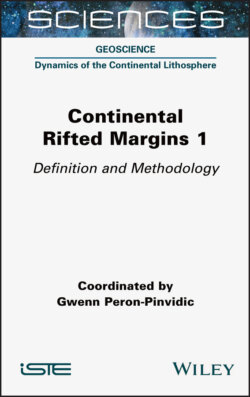Читать книгу Continental Rifted Margins 1 - Gwenn Peron-Pinvidic - Страница 13
1.1. Introduction
ОглавлениеThe Earth’s interior is composed of multiple layers of differing composition and thickness. The exterior layers are the oceanic and continental crust, followed by the upper mantle – together constituting the lithosphere (Figure 1.1). The Earth’s lithosphere is divided into tectonic plates that are in constant motion relative to each other, following a repeated evolution of opening, widening and closing oceanic basins. This plate tectonic cycle became known as the “Wilson Cycle” in honor of J. Tuzo Wilson (1908–1993), who actively participated in the important evolution of knowledge and understanding achieved in geoscience in the 1960s (Wilson 1966). By this point, breakthroughs in geophysical techniques had produced observations of magnetic anomalies, seafloor spreading ridges and hot spots that had established plate tectonics and plate motions as fact (e.g. Atwater 1970; Molnar Atwater 1973). This, in turn, allowed J.T. Wilson to identify the systematic separation and reassembly of continental masses.
Figure 1.1. Schematic representation of the main layers constituting the Earth
Within the Wilson Cycle, continental rifting corresponds to the extensional stage that leads to thinning and rupture of the continental lithosphere (Figure 1.2). The primary product of rifting is the rift, which may subsequently become a rifted margin if the extensional processes lead to ridge emplacement, genesis of oceanic crust and the opening of an ocean basin.
Rifts were identified as unique geological occurrences before plate tectonics were established (e.g. Suess 1891; Gregory 1896; de Lapparent 1898; Willis 1928; Bullard 1936). Initially, they were described as topographic depressions flanked by arrays of subvertical faults (e.g. Gregory 1923). It was not until the last century that rifts were recognized as extensional features rather than as results of compressional deformation (e.g. Vening Meinesz 1950).
Figure 1.2. Schematic representation of the Wilson Cycle in eight steps illustrating the various stages of the successive opening and closing of ocean basins (source: modified after Wilson et al. 2019)
Rifts can be summarized as geographical regions consisting of extensional sedimentary basins of various sizes, with various tectonic and sedimentary geometries that are linked in various structural contexts. The repeated use of the adjective “various” in this basic definition leads to a description that may sound rather vague and unprecise. This is deliberate, since the extension applied to a continental domain can lead to the formation of multiple structures with different geometries. If rifts are defined as topographic depressions that are created by normal faulting and associated subsidence, then the dimensions, physical characteristics and linkage characteristics between the different extended subdomains can span a wide variety of options. Because the range of observed architectural possibilities in rifts is broad, numerous classification systems for rifts have been proposed in the literature: passive versus active, narrow versus wide, intracontinental, diffuse, synorogenic and so on. However, even though each rift type may appear unique, a series of geologic features are commonly observed in most rift settings. These include specific basin types (grabens, half-grabens, pull-apart/strike-slip basins), extensional structures (normal faults, detachment faults, core complexes), sedimentary geometries (growth structures, unconformities) and salt- and magma-related features (e.g. Neumann and Ramberg 1978; Keen 1985; Ziegler 1992; Ruppel 1995; Corti et al. 2003; Merle 2011).
This chapter provides a brief summary of these features, a list of the main types of rifts and case examples. Our aim is to clarify the basic notions required to study rifted margins – this is done to avoid any misunderstanding of the use of some terms in the following chapters. Regularly, a Further reading section will be provided as an illustration of the many contributions published on the various topics. The reader interested in finding more in-depth explanations is referred to these contributions for further detailed information.
